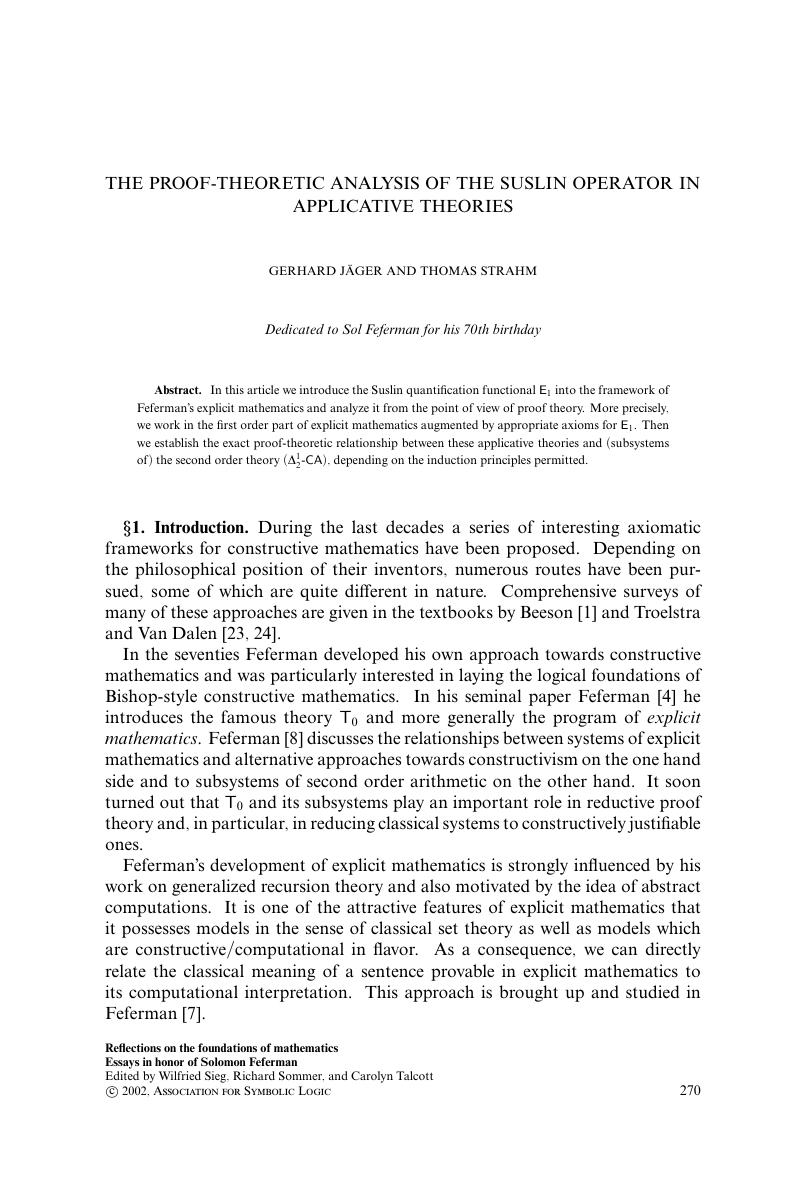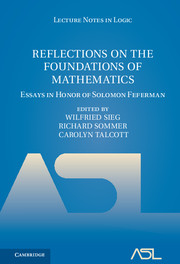Book contents
- Frontmatter
- Preface
- Contents
- PART I PROOF THEORETIC ANALYSIS
- PART II LOGIC AND COMPUTATION
- PART III APPLICATIVE AND SELF-APPLICATIVE THEORIES
- On extensionality, uniformity and comprehension in the theories of operations and classes
- The proof-theoretic analysis of the Suslin operator in applicative theories
- Feferman-Landin Logic
- Explicit mathematics with monotone inductive definitions: A survey
- PART IV PHILOSOPHY OF MODERN MATHEMATICAL AND LOGICAL THOUGHT
- Symposium program
- References
The proof-theoretic analysis of the Suslin operator in applicative theories
from PART III - APPLICATIVE AND SELF-APPLICATIVE THEORIES
Published online by Cambridge University Press: 31 March 2017
- Frontmatter
- Preface
- Contents
- PART I PROOF THEORETIC ANALYSIS
- PART II LOGIC AND COMPUTATION
- PART III APPLICATIVE AND SELF-APPLICATIVE THEORIES
- On extensionality, uniformity and comprehension in the theories of operations and classes
- The proof-theoretic analysis of the Suslin operator in applicative theories
- Feferman-Landin Logic
- Explicit mathematics with monotone inductive definitions: A survey
- PART IV PHILOSOPHY OF MODERN MATHEMATICAL AND LOGICAL THOUGHT
- Symposium program
- References
Summary

Information
- Type
- Chapter
- Information
- Reflections on the Foundations of MathematicsEssays in Honor of Solomon Feferman, pp. 270 - 292Publisher: Cambridge University PressPrint publication year: 2002
References
Accessibility standard: Unknown
Why this information is here
This section outlines the accessibility features of this content - including support for screen readers, full keyboard navigation and high-contrast display options. This may not be relevant for you.Accessibility Information
- 4
- Cited by
